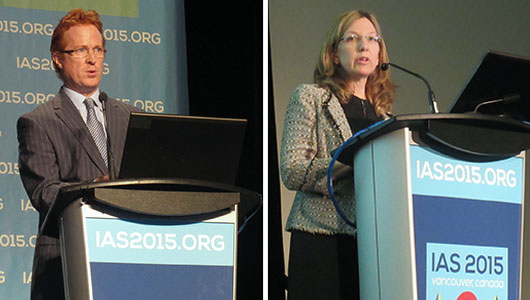
Tim Holtz and Sharon Mannheimer at IAS 2015. Photos by Liz Highleyman, hivandhepatitis.com
Pre-exposure prophylaxis (PrEP) is one of the major topics of discussion at IAS 2015: how to take it, who should be able to take it and when it will be available.
Three studies presented on Monday show that for some people in some settings, less frequent PrEP regimens with doses linked to sexual activity are feasible, with high numbers of sexual acts protected by PrEP. This may give people who want to use PrEP, and their doctors, additional options – allowing people to find a pattern of taking PrEP that best suits them.
Separate randomised trials with similar study designs were conducted with men who have sex with men in Bangkok; men who have sex with men in Harlem, New York; and women in Cape Town.
The researchers anticipated that the very different social, cultural and demographic characteristics of these populations would determine which PrEP regimen would work best – either once a day, twice a week (with an extra dose after sex) or before and after sex.
Both the daily and non-daily regimens worked well for the participants in Bangkok, who were mostly well-educated and employed. At the other two sites, where challenging social circumstances were more common, daily dosing proved easier to adhere to than non-daily regimens.
The results suggest some flexibility in the ways in which PrEP may be prescribed. But these small studies demonstrate feasibility rather than effectiveness. The best evidence for protection against infection comes from studies of daily PrEP.

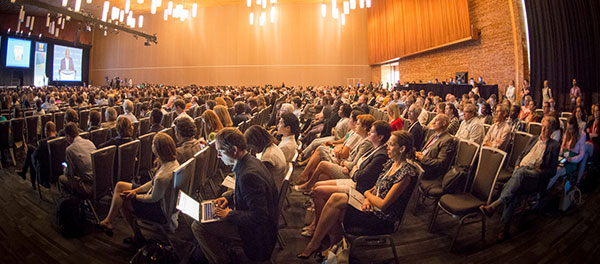



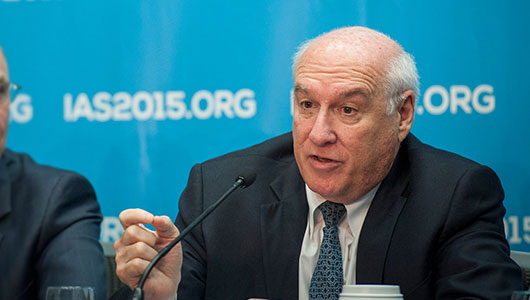
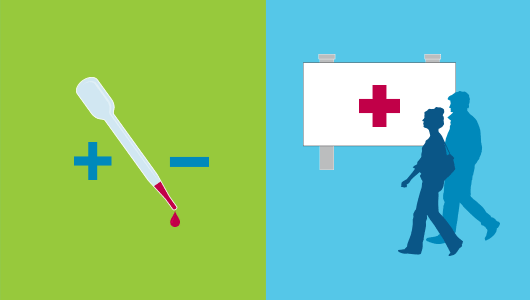
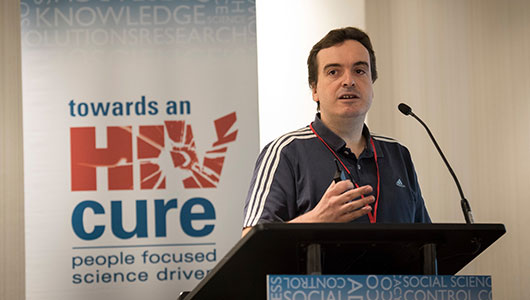
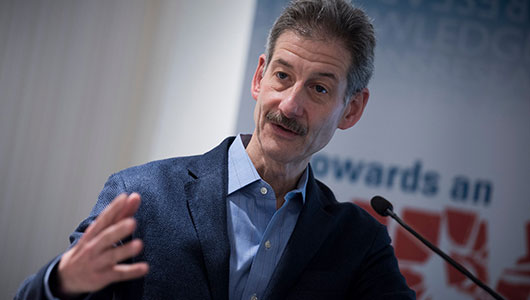
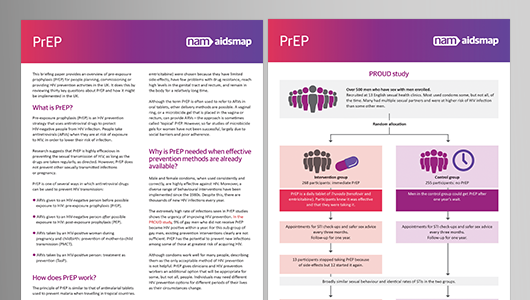


Connect with NAM on Facebook: Keep up to date with all the exciting projects, latest achievements and new developments that are going on in the world of NAM.
Follow NAM on twitter for links to hot off the press news stories from our editors covering key developments and conferences as they happen. Our news feed is linked to www.twitter.com/aidsmap_news and we also tweet from www.twitter.com/aidsmap.
Follow all the conference news by subscribing to our RSS feeds.